Gu Yuan: People's Artist and woodprint maestro
People's Artist and woodprint maestro
1
Japan embarked on full-scale war in China in 1937 and in response, the Anti-Japanese National Salvation Movement was launched nationwide.
On the streets of Guangzhou, a young man displayed his paintings of crimes committed by the Japanese invaders. With recommendation of the 8th Route Army Office in Guangzhou, the 19-year-old set off on his Revolutionary Road to Yan'an and became a master artist despite many wartime hardships.
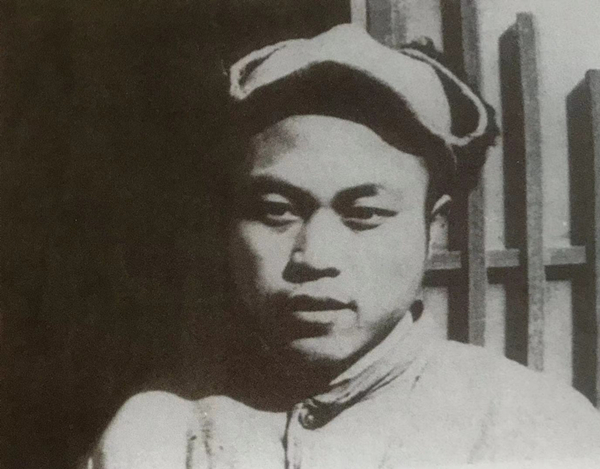
Gu Yuan in his Yan'an period between 1937 and 1945 [Photo courtesy Collected Works in Memory of Gu Yuan]
That intrepid youth was Gu Yuan, former vice chairman of the Chinese Artists Association and president of the Central Academy of Fine Arts.
2
Gu Yuan was born on Aug 5, 1919 in Nazhou Village of Tangjiawan Town. He enrolled in Guangya High School at age 13.
While in Yan'an, Gu studied at Shaanbei Public School (SPS) and his daily drawing-from-life practice brought him to Lu Sin (Lu Xun) Academy of Arts & Literature in Yan'an, where he joined the Communist Party of China.
In simple and crude cave dwellings, Gu Yuan showed his talent and industriousness. He used simple instruments such as sharp knives and blocks of wood to create woodcuts that realistically depict life.
The woodblock prints Carrying Straw and Sheep Flock were sent to Chongqing, the wartime capital of China, for exhibition and were highly acclaimed by ink painting master Hsu Pei-hung (Xu Beihong). He called Gu "a rare genius in the artist circles of China" in an article published in the news, which won Gu Yuan considerable recognition.
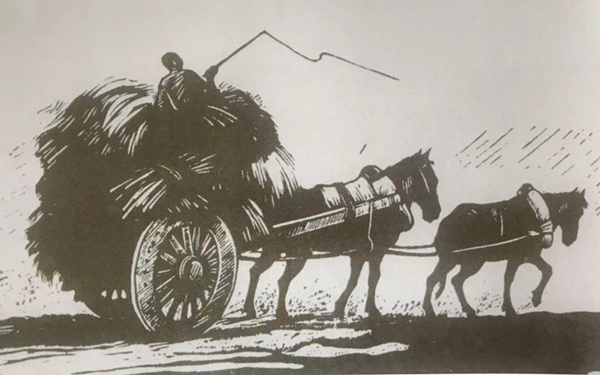
Carrying Straw, a woodblock print created by Gu Yuan [Photo courtesy Collected Works in Memory of Gu Yuan]
3
Upon graduation, Gu Yuan left Yan'an for Nianzhuang in Chuankou District to work as an amanuensis (scribe) of the County Government. This allowed to learn more about people and create artworks that would define the era:
Divorce Lawsuit and Marriage Registration depict women's ideological liberation;
Study in Winter and Learn 1,000 Characters show the eradication of illiteracy in the countryside;
Rally for Reducing Ground Rent and Burning Down the Old Contract reflect the Land Reform Campaign;
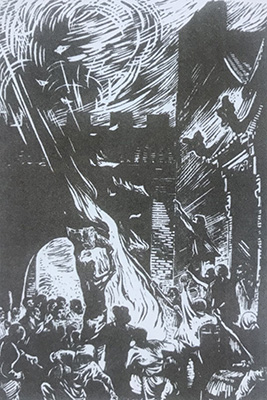
Burning Down the Old Contract [Photo courtesy Collected Works in Memory of Gu Yuan]
Our Dear Soldiers and Upholding Our Own Army attest that soldiers and civilians are of one family …
It was the golden age for Gu Yuan's artistic creation and achievement. He was awarded the A-Level Yan'an Youth Literature Prize and elected A-Level Culture & Educational Model. He attended the Yan'an Forum on Literature & Art presided over by Mao Tse-tung (Mao Zedong). Finally, he earned the title of Master Artist.
4
Gu Yuan matured in the background of war. He went to liberated areas of North and Northeast China and later the Korean frontlines. He created Bridge of Men, Fight in Shaanbei, Bulletin of Good News in Battlefield, Steel & Iron Transit, and many typical woodcuts.
In Czechoslovakia, he took part in the Chinese Delegation as a Master Artist at the 1st World Conference of Defending Peace.
Gu Yuan later became a leader of the Art Studio of the Central Press Photography Department and People's Publishing House Work Office in Beijing and was elected to the China Federation of Literary & Art Circles and managing director of the Chinese Artists Association.
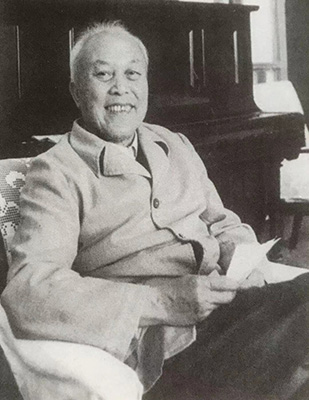
Gu Yuan (1919-1996) [Photo by Shen Yantai]
5
With footprints on the land across the nation, Gu Yuan incorporated diversified folk customs and adopted paper-cutting skills to his woodprints. His creations entered another golden era.
His woodcuts Light in Chinese Dates Garden, Laud to Camel, New Life of Tibetans, and watercolor paintings Kitchen Smoke, Busy Winter in Hainan, and Fishing in Songjiang River were masterpieces in the new era.
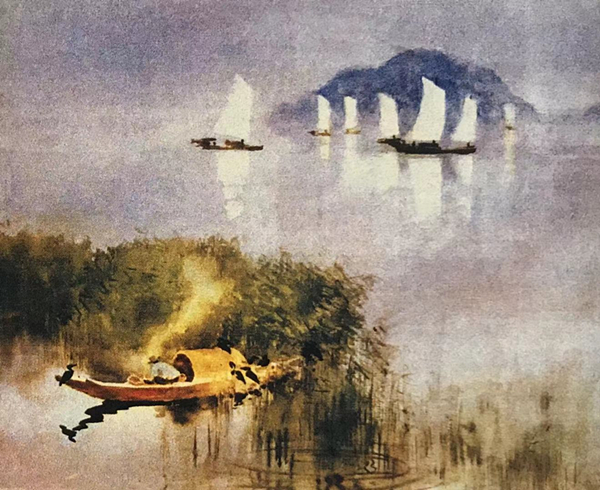
Kitchen Smoke watercolor painting [Photo courtesy Selected Works of Gu Yuan's Watercolor Paintings]
Art Master Cai Ruohong, former dean of the Fine Arts Department of Lu Sin Academy of Arts & Literature, once commented that Gu Yuan's woodblock prints, featuring the zest of life, advanced ideological content and perfect Chinese national style, indicate that the exotic art of woodprint has been amazingly nationalized.
6
Gu Yuan returned to his hometown for the last time at age 76. He donated all his artwork to Zhuhai City to repay his townsmen. The Gu Yuan Museum of Art has been built to showcase the hundreds of woodcuts, sketches, and watercolor paintings in memory of Gu Yuan.
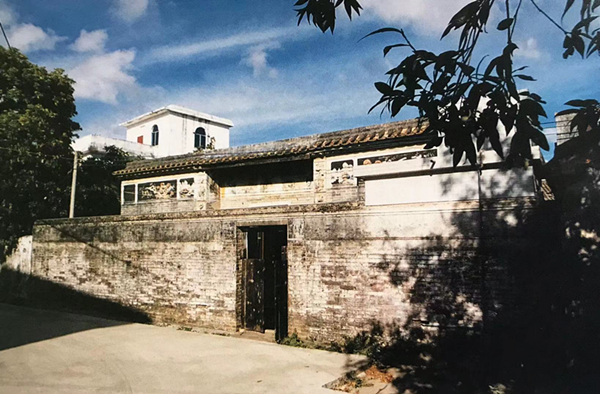
Gu Yuan's former residence in Nazhou Village [Photo by Zheng Xiaoyue]
Gu Yuan died of disease on Aug 10, 1996 at age 77, only months after bequeathing the works to his hometown.







